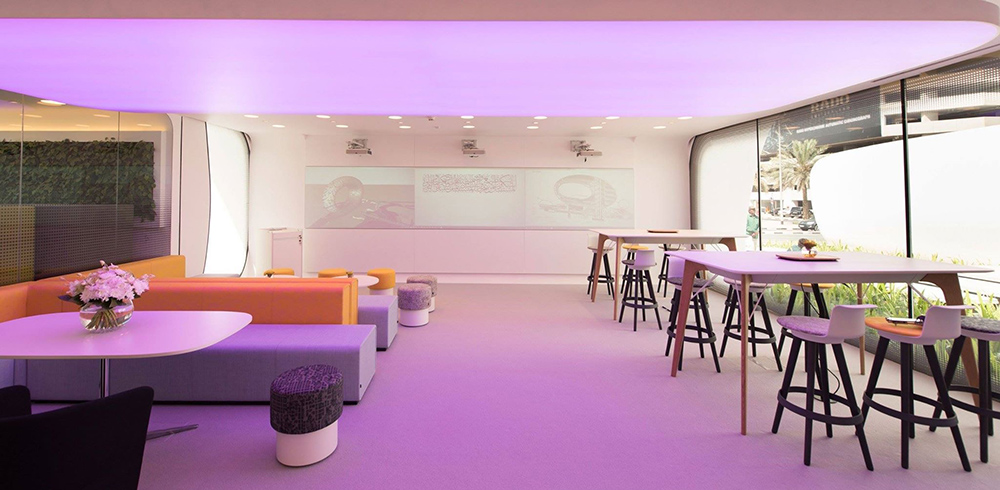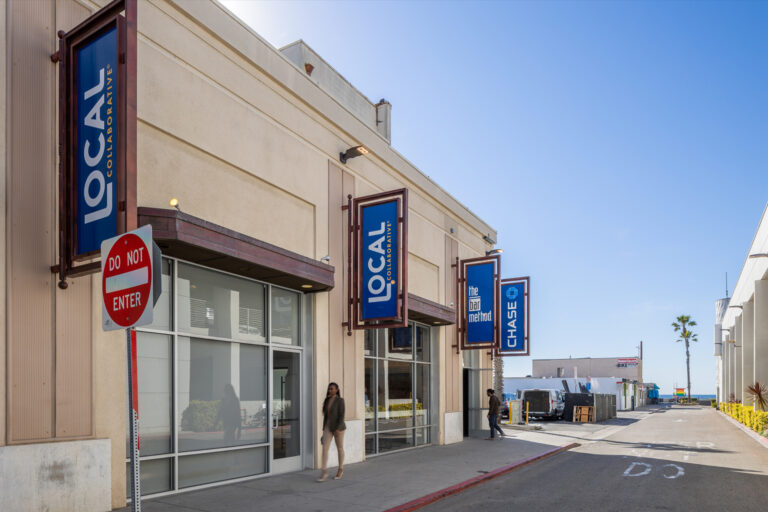
From drones to 3D printing, these scientific breakthroughs are set to change not only the way builders operate, but the way we live as well.
Chicago-based software developer John Ellis began his career at Motorola 26 years ago, creating products that are part of today’s mobile revolution—think the country’s first mobile device third-party developer program that has since led to the Google and Apple app stores. He went on to work as a global technologist for Ford Motor Co.’s connected car business unit, where he helped develop technology to integrate mobile devices into automobiles— now known as Google’s Android Auto and Apple’s Car Play. Meanwhile, John Ellis formed his own management consulting firm (Ellis & Associates) in 1997 to teach clients how to conduct business effectively overseas but now serves clients in the space where automotive, consumer, connectivity and software intersect.
Here, the high-tech pioneer discusses five technologies that are set to change the face of residential and commercial building in the coming years, some of which already are taking place right here in L.A.
How did you arrive at these five specific technologies?
I picked ones that I thought were the most transformative for anyone working in the space, whether a contractor, owner of a construction company or a regulator, such as an inspector. I tried to pick technologies that were real; none of this is science fiction. These are all demonstrative, thought-provoking, and challenge people in terms of the automation, chemicals and chemistry or cool things you can do with construction.
Tell us about how each of these five technologies is expected to change the future of building.
3D printing. This is the ability to take a printer and print an object in 3D. Think of Star Trek and the replicator [a machine capable of creating and recycling objects]. You would open up a cage, and out would come something from thin air; it’s an incredible area. In May 2016, Dubai was able to demonstrate a 2,300-square-foot office building that was completely 3D-built. The objects inside of it were 3D-built as well, with the exception of electric wiring and glass. There were significant cost savings in terms of the number of employees and the amount of time it took to finish the building. This was a demonstration by the government to prove the efficacy of 3D building, and they eventually want half or three-quarters of the buildings in Dubai to be printed as opposed to being built onsite.
China also has a 10,000-square-foot home that was 3D-built. Certainly, some of these exercises are almost extreme examples to prove something. It’s not yet viable today to 3D print everything. That said, the prefab market is becoming more accepted because the quality and design choices and construction are better. A form of printing already is being done via assembly at the factory, and this is taking it to next step. One of the future implications of 3D printing is in trim work. You no longer have to get carpenters to do these complicated pieces, but instead you can print them onsite to specification and color and then install them…that world is coming.
For example, the International Space Station recently needed to repair a product and didn’t have a tool for it in space. They did have a 3D printer, though, and a toolmaker sent them a design and they used it to print the product they needed in space. It’s all about becoming self-sustaining. The time frame for everyday use is probably 10 to 15 years away; it’s not that far off.
Wireless power. Everyone in the world believes that to get power, you have to plug into a wall outlet or use batteries. Well, there is a group of people doing wireless charging without wires. The first example of this is surface charging, where you put a device on a surface pad and it charges through induction. This is out in the market today; you can put a device on a pad and it charges. Take that same concept, and you walk into a room and it has ambient electric waves and you can wirelessly charge your phone while it’s on your body. We can contemplate a world in which there are no wires. You can bring a light in and turn it on…and it’s on. We just have to get it to a price point and a form where you can deploy it reasonably and safely. That is happening today, with the Department of Energy placing a lot of focus on this. What does it mean to the builder? Maybe power becomes part and parcel of the product, but we’re still 15 to 20 years away. It’s fascinating to contemplate.
Nanoparticle paint. This is a concept that you’ve heard of—nanotechnology. This is the ability to make materials smart and do things with them, like infusing paint with particulates that can be smart.
One example is cars that could change colors. It’s not unreasonable to assume that this technology could also make it into homes and commercial buildings. For example, you could paint a home with nanoparticle paint that can change colors. Or, imagine the nanoparticle paint is infused with a cleaning agent and you don’t have to wash it; when rain comes, it resists dirt and staining.

Autonomous cars. In this particular case, the implication to a builder is significant. If we can get to a world where cars don’t need people to drive them, then it’s very likely you will be in a world where you don’t need to own a car. And if cars don’t need to be driven by human beings, then you have a world where you can schedule a car and it just shows up…whether you need a two-person car or you want to go on a getaway and need a car for a family of four, or a pickup truck or a mini-van for a group of friends. The transportation you need at the moment you need it just shows up.
If that becomes true, then we also don’t need curbs, streets, garages, driveways and homes with setbacks off of the road. Then how we plan and execute developments is different. How real is it and when is it coming? Ford announced it is going to have an autonomous car in 2021 and is being joined by Volvo, Tesla, Google and others in and around the same time frame. It’s real and happening now, and builders need to start thinking about it now in terms of the entire housing and commercial element.
Drones. People thought technology entrepreneur Jeff Bezos was crazy when he explored the use of drones to deliver packages. Now everyone is looking at it. Drones now have become the hot new thing in transportation; there is amazing stuff happening. Do you remember when you were a kid and watched The Jetsons and they could just get in a car and whip around? It could have been a drone. Drones now are being made with seats that can carry up to 200 pounds. So, we could have drone transportation for people and not just goods.
In addition, Uber just announced its version of a flying car that is more like a drone than a car. The introduction of this technology into the mass market is going to take away garages and driveways, and maybe in my future home, I will just need to have a drone pad for transportation and deliveries.

What would a home with all of these technologies in place look like?
In the world I live in, I have a furnace room that heats my house and has an air-conditioning unit for central air. It’s connected to my electricity supply. So, I have an electrical line that supplies electricity to my house, a pipe to provide natural gas to burn and to create the heat, and a pipe to put in fresh water. All of the waste leaves the house in terms of drains. In the future home, you’re going to have a carbon supply line that will provide the basic element of all things we have and enjoy on earth…3D printing takes carbon and prints it into whatever shape or object you want. I could envision a 3D printer room that becomes part of the house similar to what the furnace room is today; you wouldn’t buy a house without one.
It would have an Ethernet connection to download a schematic of an object, like a plate or fork. When you want it, your account is debited a license fee of maybe $2 to print the object. You’ll pay the designer, the printer will pop to life, you’ll hear a ‘[b]ing’ and you’ll have a plate ready to use for dinner. In the same house, you could print 12 plates for a nice dinner. Or, you’re online at Target or Costco, and instead of going to get an object you’ve ordered, an autonomous car just shows up so you can go get it or a drone delivers it. A drone delivery might be $10 and an autonomous car $5. With the drone option, within an hour a drone lands on your drone pad and releases the package that you just purchased with the objects for your dinner, including fresh vegetables. Then you have your dinner and people are sitting in your dining room and someone remarks on how beautiful and clean your home is. You could say, ‘It’s courtesy of my nanoparticle paint that allows the room to change moods and color and is always clean.’
Then a guest might drop and break a plate. You pick it up, and instead of putting it in the garbage, you can put it in the 3D disposal can and it puts carbon back into your carbon supply line so you can print another plate later. You also could invite people to sit in your living room, which has 3D-printed couches, or on the patio with a geometric structure that has been 3D printed courtesy of a new company that builds 3D objects that can’t be built by hand because of the geometries. That’s the future of the home or the abode you would be living in. That future is in about 20 to 25 years; it’s totally real today and coming.
Do you think Los Angeles will see these technologies in the very near future?
L.A. already has autonomous cars. Last November, Mayor Garcetti was driven from City Hall to the L.A. Convention Center in an autonomous Volvo as part of the L.A. Auto Show. This year, the L.A. Auto Show will present Local Motors, a company out of Phoenix that did a 3D-printed, autonomous bus named Olli in partnership with IBM that is already up and running in Washington, D.C. You can get on the bus and it will say, ‘Welcome aboard Olli. Where are you going today?’ And then you use regular, natural language, like, ‘I want to go to the Washington Monument,’ and Olli will take you there. Four years ago, L.A. Auto Show head Lisa Kaz recognized the transformation that was happening in the transportation industry and knew the auto show industry needed to change.
So, she introduced, in conjunction with the L.A. Auto Show, a Connected Car Expo to showcase the best in technology, including the autonomous car. L.A. is now the epicenter of all things transportation and connectivity and the movement of goods and services. On top of that, you have the mayor who is committed to making the city of L.A. and greater L.A. County an epicenter of things related to transportation.
Photography Courtesy of Local Motors and KKreations


